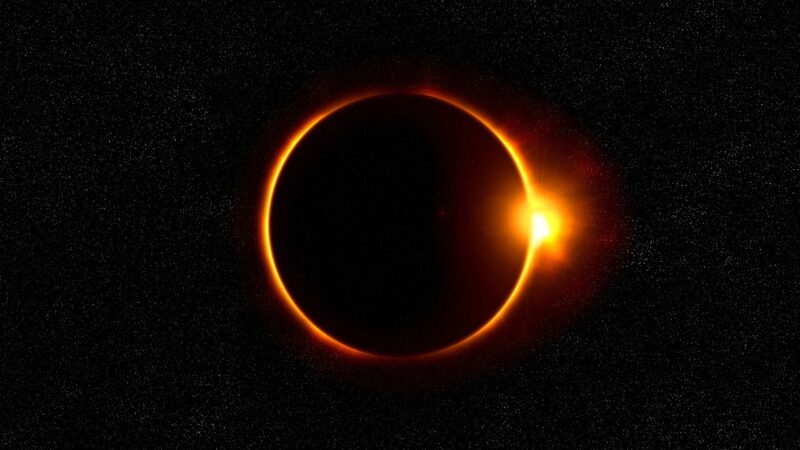How Ancient Civilizations Predicted Eclipses Without Modern Tools
November 15, 2024

The ability to predict celestial events has always been a profound aspect of human curiosity and knowledge. Among those events, solar and lunar eclipses are among the most dramatic and awe-inspiring. Ancient civilizations, without the benefit of modern telescopes, computers, or sophisticated mathematical models, developed ways to predict these phenomena with remarkable accuracy. This article explores the various methods employed by cultures such as the Babylonians, Chinese, and Mayans to forecast eclipses, shedding light on their rich astronomical understanding.
1. The Nature of Eclipses
Before diving into the prediction techniques, it is essential to understand what eclipses are. Eclipses occur when one celestial body moves into the shadow of another celestial body. The two types of eclipses are:
- Solar Eclipses: Occur when the Moon passes between the Earth and the Sun, temporarily blocking the Sun’s light.
- Lunar Eclipses: Occur when the Earth passes between the Sun and the Moon, casting a shadow on the Moon’s surface.
Understanding the celestial mechanics of eclipses was crucial for ancient astronomers, who sought to predict these events for both practical and ritualistic purposes.
2. Babylonian Astronomy: The Birthplace of Ecliptic Predictions
The Babylonians, particularly in the ancient city of Babylon around 600 B.C., were among the first to record astronomical observations systematically. They meticulously observed the positions of celestial bodies over time, leading to the development of a sophisticated system of predictions.
The Saros Cycle:
One of their most significant contributions was their understanding of the Saros cycle – a period of approximately 18 years, 11 days, and 8 hours after which eclipses repeat. By noting the patterns of eclipses over many years, they could predict future eclipses based on this cycle. They kept detailed records inscribed on clay tablets, noting the dates and characteristics of each eclipse, which later became essential for accurate forecasting.
Geometrical Observations:
Beyond the Saros cycle, Babylonian astronomers also utilized geometrical observations to estimate the timings of eclipses. By measuring the altitude of the Moon and Sun above the horizon, they would predict when the alignment of the three bodies would lead to an eclipse. This method, though rudimentary compared to modern techniques, showcased an incredible understanding of celestial mechanics.
3. The Chinese Contribution: Eclipse Records for Millennia
Ancient China has a rich history of eclipse prediction that dates back thousands of years. Chinese astronomers were keen observers of celestial events and made significant contributions to the subject.
The Classic Records:
Chinese records of eclipses date as far back as the Shang Dynasty (16th-11th century B.C.). They maintained comprehensive lists of observed eclipses and developed a systematic method for making predictions. The Book of Han, a historical text established during the Han Dynasty, compiled eclipse records that allowed astronomers to analyze historical patterns and cycles.
Eclipses as Omens:
In ancient China, eclipses were often seen as omens indicating significant events. As a result, astronomers were expected to provide predictions to the emperors to prepare for any impending supernatural occurrences. This political aspect added pressure to accuracy in their observations and predictions, leading to improved methodologies.
Chinese astronomers developed tools like the armillary sphere and gnomon to assist in their celestial measurements, demonstrating an empirical approach to science long before the European Renaissance.
4. The Mayans: Cosmic Calendars and Eclipses
The ancient Mayans, renowned for their advanced understanding of astronomy, developed intricately detailed calendars to track celestial events, including eclipses. They viewed these events as heavily tied to their mythology and agricultural practices.
The Tzolk’in and Haab’ Calendars:
The Mayans used a combination of the Tzolk’in (260-day cycle) and the Haab’ (365-day solar calendar) to create a cycle that would allow them to predict eclipses. They noted the lengthy cycles and created ephemerides – tables listing the positions of celestial bodies on given dates – which facilitated predictions.
Eclipse Myths and Rituals:
For the Mayans, eclipses held great significance, often associated with mythological narratives and agricultural cycles. Their ability to predict eclipses was not only a testament to their astronomical prowess but also a vital part of their cultural and religious practices.
5. Methods and Tools of Eclipse Prediction
While these civilizations may not have possessed the advanced technology we have today, their meticulous observations laid the groundwork for successive astronomical studies. Their methodologies included:
- Systematic Observation: Consistent and precise recording of celestial positions over time.
- Cycle Identification: Recognizing natural cycles, such as the Saros cycle, that govern the recurrence of eclipses.
- Geometric Tools: Usage of simple tools such as gnomons and sundials for measuring celestial angles.
- Documentation: Inscribing observations on tablets or in historical texts for future analyses.
These methodologies highlight the ingenuity of ancient astronomers in their quest for understanding the cosmos. Through generations of watching the skies, they developed successful prediction techniques that instilled wonder and reverence for the universe.
Conclusion: The Legacy of Ancient Astronomers
The ability of ancient civilizations to predict solar and lunar eclipses without modern tools serves as a testament to human observation, intuition, and ingenuity. Their contributions laid the foundation of astronomy that we continue to build upon today. Though their methods may seem primitive compared to our own, they revealed a profound understanding of celestial mechanics and have left an indelible mark on human knowledge.
As we continue to study and appreciate the wonders of the cosmos, we owe a great deal to those early astronomers who dedicated their lives to understanding the skies. Their predictions of eclipses not only enriched their cultures but also inspired future generations to gaze up and explore the mysteries of the universe.
As we anticipate the next solar or lunar eclipse, we honor the ancient wisdom that helped humanity understand this breathtaking phenomenon. So the next time you look up at an eclipse, remember: countless eyes have gazed at the same celestial event throughout history, awash with wonder and anticipation, as celestial bodies dance in their orbits in a grand cosmic ballet.







